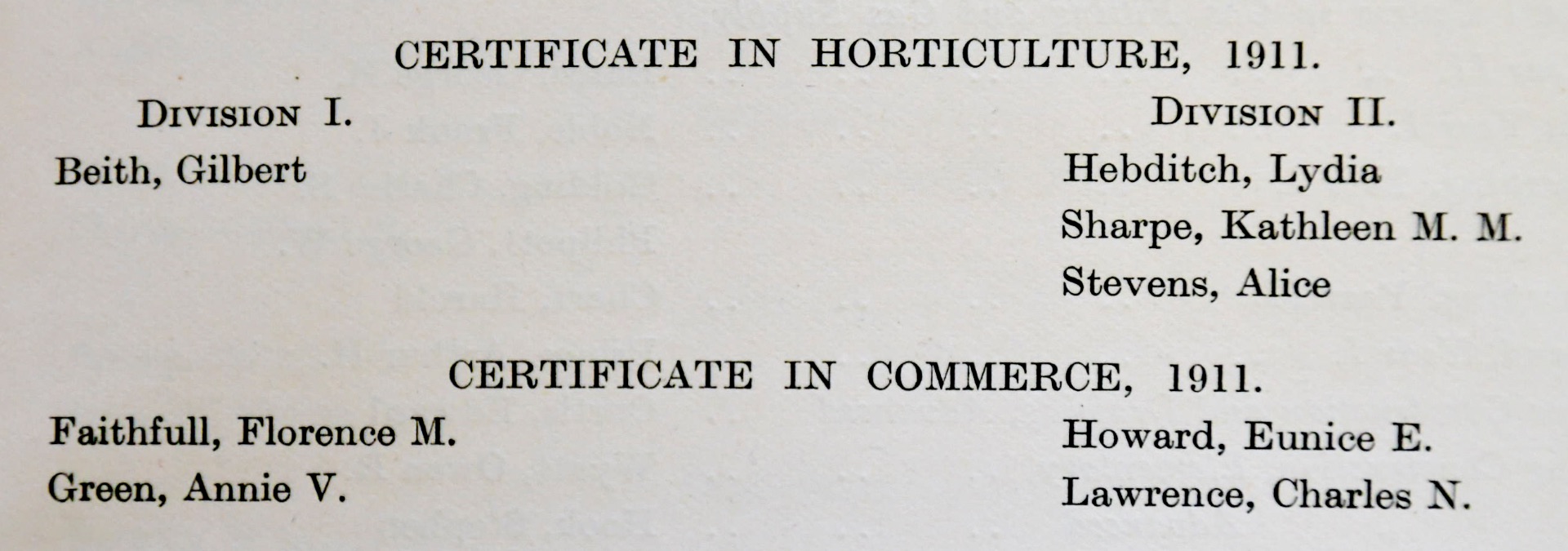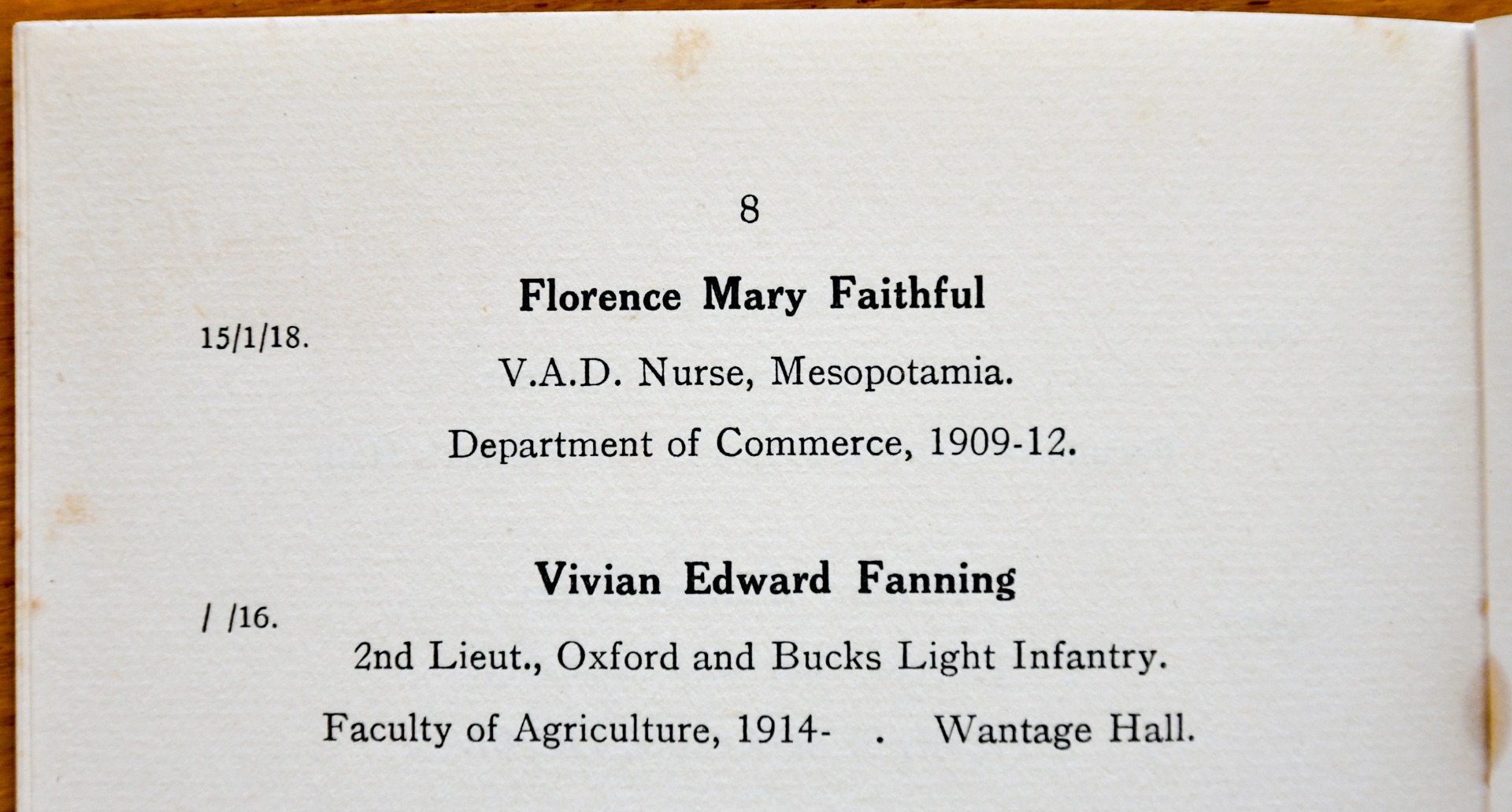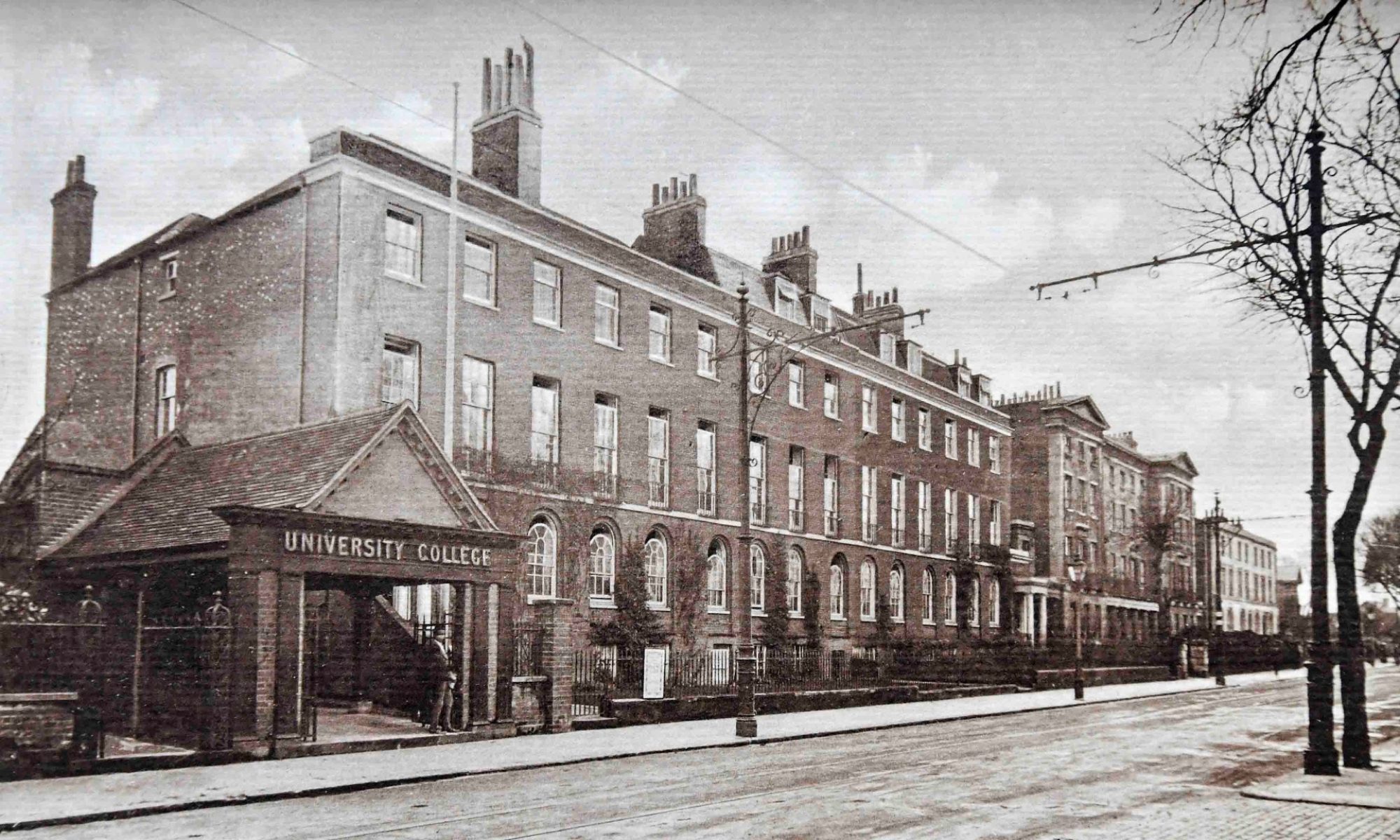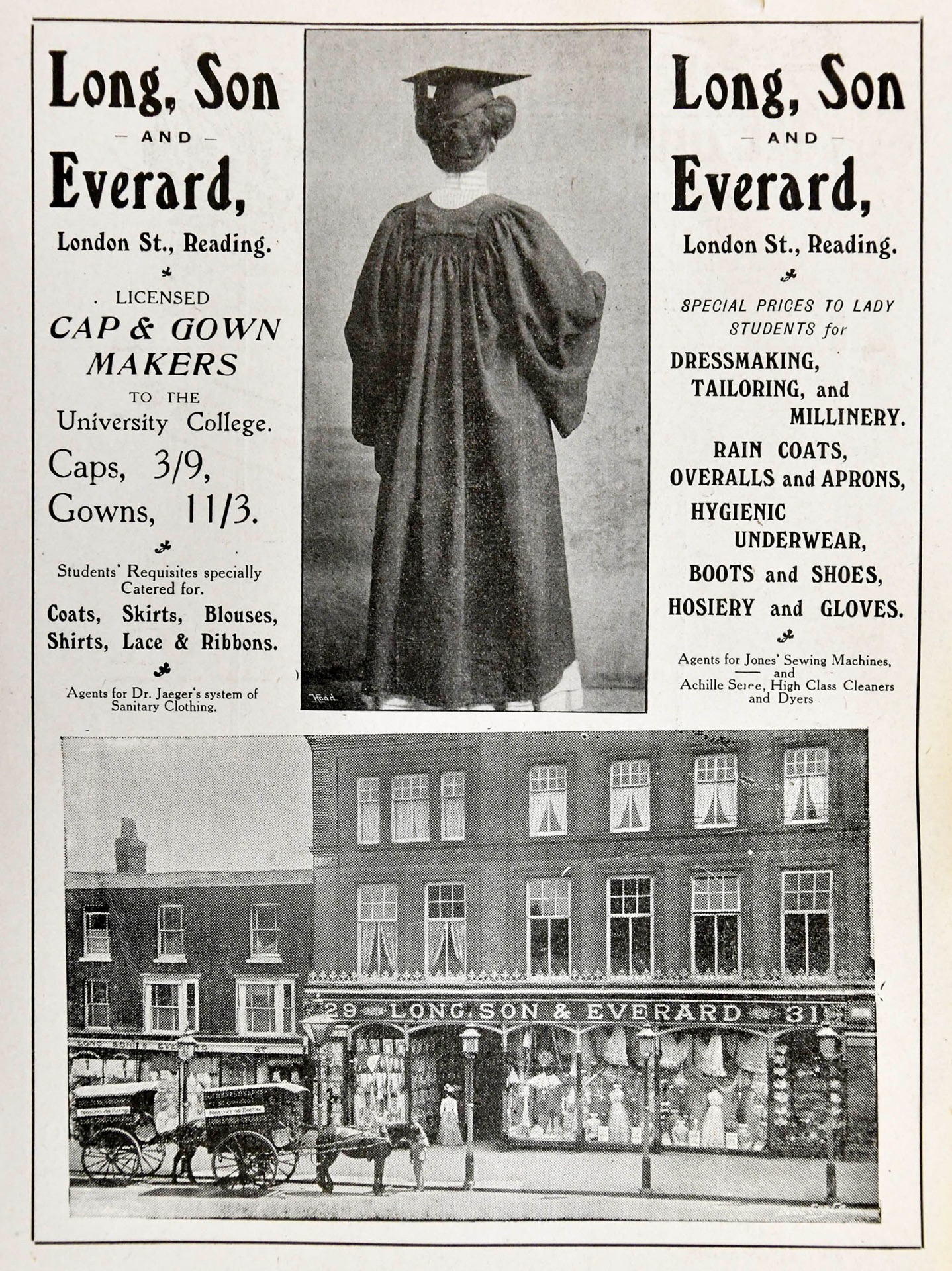As we start the final week of Women’s History Month, this is an opportunity to feature someone mentioned to me recently by Dr Rhianedd Smith (University Museums and Special Collections Services) .
Florence Faithfull is the only woman whose name appears on the War Memorial on the London Road Campus and University College Reading’s Book of Remembrance.


She was born in the early 1890s and lived at number 26 Upper Redlands Road, Reading with her parents and siblings.
A former student of University College Reading, Faithfull is recorded in the Annual Report for 1910-11 as receiving the Certificate in Commerce.

During the First World War, she enrolled as a nurse in the Voluntary Aid Detachment and was stationed in Mesopotamia (Iraq) at the British General Hospital. She died at Basra in January 1918 at the age of 26, the result of a tragic boating accident.
The circumstances of her death were that the Matron and twelve of the hospital nurses had been invited to the Officers’ Hospital to meet those convalescing and to have tea. They were transported by motor launch, but on the way back there was a collision with a steam tug and four of the nurses lost their lives. A Court of Inquiry recorded a verdict of accidental death resulting from an error of judgement by the helmsman of the launch.
Florence Faithfull’s medal card containing the words ‘Died on service’ is held in the National Archives.

Her death is remembered in 1920 in the ‘Old Students’ News’, though there is a mis-spelling of her name.

As noted above, her name has been entered in the Book of Remembrance (again with the mis-spelling). Regrettably there is no photograph.

Thanks
To Dr Rhianedd Smith for telling me about Florence Faithfull and suggesting her as a topic.
To Paul Johnson, Image Library Manager, National Archives, for permission to reproduce the image of the medal card.
Sources
Biographical information about Florence Faithfull was obtained from the University of Reading’s Enterprise Catalogue.
Book of Remembrance of those Members of The University College Reading who fell in The War 1914-1918. University of Reading Special Collections, MS 5339.
Medal card of Faithfull, Florence, M. Corps: Voluntary Aid Detachment. National Archives, Catalogue reference: WO 372/23/13539
University College, Reading. Old Students’ News, No. 6, Jan., 1920.
University College, Reading. Report to the Court of Governors for the Year ended September 30th, 1911.


